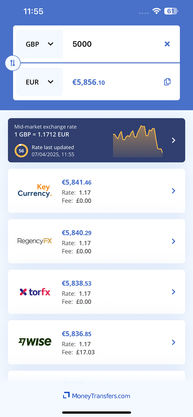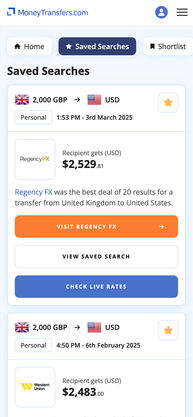How to send money to the US from Australia with the best AUD-USD rate
Get the best deals when you transfer from Australia to United States. Find the cheapest, fastest, and most reliable providers with the best AUD to USD exchange rates.
Read on for the best deals, expert information, and all you need to send money to United States from Australia.
Transferring the other way? Send USD from United States to Australia instead."Over 16 million customers use Wise, mostly for their excellent mobile app, transparent fee structure & use of mid-market rates. Now increasingly used for larger transfers."
"Over 16 million customers use Wise, mostly for their excellent mobile app, transparent fee structure & use of mid-market rates. Now increasingly used for larger transfers."
"Xe has over 30 years of currency exchange experience, and is one of the most reputable names on the market. 200 countries, 100 currencies, & funds often received in seconds."
"Xe has over 30 years of currency exchange experience, and is one of the most reputable names on the market. 200 countries, 100 currencies, & funds often received in seconds."
"Key Currency offers a personal service with a dedicated account manager. There are no transfer limits or fees which is perfect for larger send amounts."
"Key Currency offers a personal service with a dedicated account manager. There are no transfer limits or fees which is perfect for larger send amounts."
"Currencyflow is a modern FX broker backed by industry veterans with 30+ years of currency trading experience. Contact the UK-based team for a free quote."
"Currencyflow is a modern FX broker backed by industry veterans with 30+ years of currency trading experience. Contact the UK-based team for a free quote."
"Regency's UK-based account management team has vast experience. Get support on all kinds of transfers, from overseas property transactions to business payments & more."
"Regency's UK-based account management team has vast experience. Get support on all kinds of transfers, from overseas property transactions to business payments & more."
"TorFX's 5-star service handles most currency needs, especially relating to overseas property, emigration & retirement. Friendly phone support, no-obligation conversations & no max transfer limit."
"TorFX's 5-star service handles most currency needs, especially relating to overseas property, emigration & retirement. Friendly phone support, no-obligation conversations & no max transfer limit."
"Over 16 million customers use Wise, mostly for their excellent mobile app, transparent fee structure & use of mid-market rates. Now increasingly used for larger transfers."
"Over 16 million customers use Wise, mostly for their excellent mobile app, transparent fee structure & use of mid-market rates. Now increasingly used for larger transfers."
"OFX have been helping individuals and businesses send money for over 25 years. Transfer in 50+ currencies to 170+ countries, with 24/7 phone access to currency experts."
"OFX have been helping individuals and businesses send money for over 25 years. Transfer in 50+ currencies to 170+ countries, with 24/7 phone access to currency experts."
"Currencies Direct have over 30 years of global money transfer expertise. Award winning service with a TrustPilot rating of 4.9. Lock-in rates for the future or trade 24/7 on web or mobile."
"Currencies Direct have over 30 years of global money transfer expertise. Award winning service with a TrustPilot rating of 4.9. Lock-in rates for the future or trade 24/7 on web or mobile."
"Xe has over 30 years of currency exchange experience, and is one of the most reputable names on the market. 200 countries, 100 currencies, & funds often received in seconds."
"Xe has over 30 years of currency exchange experience, and is one of the most reputable names on the market. 200 countries, 100 currencies, & funds often received in seconds."
"Remitly focuses on sending money to friends and family in Asia, Africa and South America. Wide coverage and well-suited to regular transfers home."
"Remitly focuses on sending money to friends and family in Asia, Africa and South America. Wide coverage and well-suited to regular transfers home."

"Over 16 million customers use Wise, mostly for their excellent mobile app, transparent fee structure & use of mid-market rates. Now increasingly used for larger transfers."
"Over 16 million customers use Wise, mostly for their excellent mobile app, transparent fee structure & use of mid-market rates. Now increasingly used for larger transfers."
"Xe has over 30 years of currency exchange experience, and is one of the most reputable names on the market. 200 countries, 100 currencies, & funds often received in seconds."
"Xe has over 30 years of currency exchange experience, and is one of the most reputable names on the market. 200 countries, 100 currencies, & funds often received in seconds."
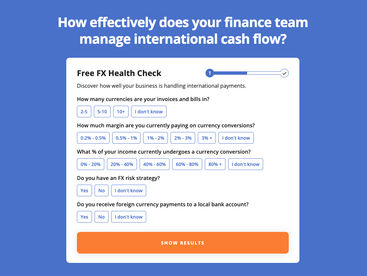
In our experience, there are always efficiencies to be made in how businesses manage international payments in and out.
Why not take our free FX health check test to see how effective your business is in managing these. It only takes a couple of minutes.
Best choice: Wise
We tested & reviewed dozens of money transfer providers, and Wise scored highly.
Transferring 12,000 AUD to USD will cost you $47.09 in fees, and you will receive 7,975.58 USD. The delivery time is next day, but it depends on the day you make the transfer.
So for a great blend of cost, speed & features, make your Australia to the United States transfer using Wise.
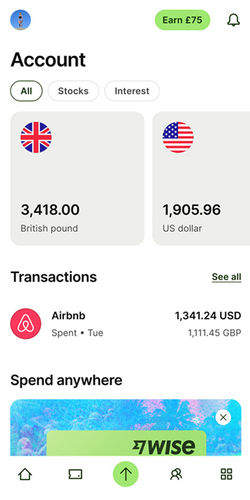
How to compare deals on Australia to United States money transfers
Always compare rates
Don't pay more than you need to. Use our live comparison tool to ensure the best rates on money transfers from Australia to the United States.
Choose a provider
Select the provider that gives you the best value & service for your needs
Click, sign up & send
Follow the steps & start your transfer from Australia. Your funds will be converted to US Dollar and transferred to the United States.
Get the most from sending money from Australia to United States
Comparing providers offering services between Australia and the United States based on your specific transfer amount, is the easiest way to get the best price on your transfer.
We cover the entire AUD-USD market and have compared 15 providers offering services between Australia and the United States.
This ensures you will get the most comprehensive options for sending Australian Dollar to the United States.
Whilst we rate Wise as the best overall for transfers between the two countries, comparing gives you the best idea for your specific Australia to the United States transfer needs.
Cheapest way to send money to the United States from Australia: Key Currency
The cost is a combination of a fee of 0 AUD and an exchange rate for converting Australian Dollar to US Dollar that is 0.25% different to the mid-market rate.
We found that Key Currency is 0.01% cheaper than the second-best option.
We would recommend Key Currency for low cost, affordable transfers from US Dollars to United States.

Fastest money transfers to the United States from Australia: Currencyflow.
With Currencyflow , the transfer time to US is minutes - 24 hours, with a 0 AUD transfer fee (based on $12,000 transfer)
When testing the fastest options, we compared the 15 money transfer providers offering Australia to the United States transfers for overall speed. This included transfer times to after depositing Australian Dollar to a money transfer account.
When you want the fastest way to send, Currencyflow is our recommended choice for Australia to the United States transfers.
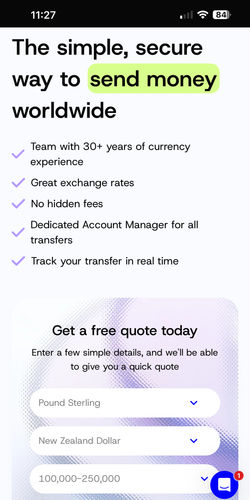
The best apps to send AUD to United States from Australia
Most money transfer companies have apps you can use to send money abroad.
We've compared and analyzed over 15 apps & companies for AUD/USD transfers and these are the best apps we found. All these apps are available on iOS and Android for free.
App | Rating | Mobile wallet |
|---|---|---|
iOS: 4.8 / 4.4K reviews | Yes (21 currencies) | |
iOS: 4.8 / 2.6K reviews | Yes (30+ currencies) | |
iOS: 4.9 / 2.3M reviews | Yes (Remitly One) | |
iOS: 4.7 / 106 reviews | No | |
iOS: 4.8 / 158K reviews | Yes (40+ currencies) | |
iOS: 4.8 / 108.4K reviews | No | |
iOS: 4.9 / 936K reviews | Yes (39 currencies) |

Transfer a large amount of money
Wise is the best rated company for sending large amounts of US Dollar to the United States out of 15 companies offering the service.
Whether for a property purchase, or for business, sending large amounts of money to the United States from Australia has the potential to be very expensive.
Wise is our choice for big transfers to AUD because of all round price, speed and management when making large transfers.
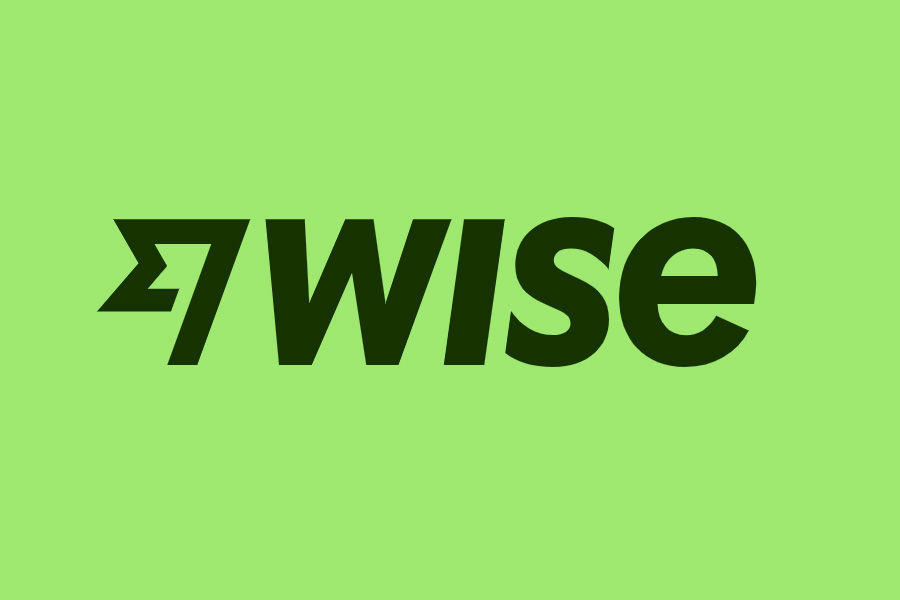
Understanding the cost of money transfers from Australia to United States
The total cost of sending money to United States from Australia is made up of a combination of mid-market, exchange rates and fees.
The Mid-Market and Exchange Rates: The current mid-market for AUD-USD is 0.667 USD per Australian Dollar.
Using a transfer company with an exchange rate as close to the mid-market rate as possible will result in being able to buy more US Dollar for your Australian Dollars.
Over the last 7 days, the average AUD-USD mid-market rate has seen each Australian Dollar worth 0.6702 USD. Within this we see a high of 0.6717, and a low of 0.667.
Of the 15 companies compared, Wise offers the best exchange rates.
The biggest factor in the overall cost of sending money is the exchange rate you receive on converting AUD to USD.
Fees: When sending money you may have to pay fees. Key Currency costs 0 AUD per transfer at the moment, which is the cheapest option of the 15 providers compared. We would recommend searching to ensure you get the correct fee for your transfer amount.
Amount Received: When comparing providers, the best measure is the amount of US Dollar eventually received in the United States.
This number should be a guide for your decision if cost is important. A higher amount of money received in the United States means a better overall cost of sending money from Australia.

Finding the best exchange rate between Australian Dollar and US Dollar
Getting a strong exchange rate between AUD and USD is essential. The exchange rate you secure impacts how much USD you get for your AUD.
It can pay to track rates, and keep on top of currency trends.
In the past 7 days, the mid-market rate from AUD to USD has averaged 0.6702.
In this period there was a high of 0.6717, and a low of 0.667.
Wise, which is our recommended service to send money online from Australia to United States offers 0.6673 USD per AUD which is only -0.04% above the mid-market rate.
Want to secure the best AUD-US Dollar exchange rates?
Sign up for our rate alerts and we'll tell you when it's the best time to move your money from Australia to United States!
Funding your Australia to United States money transfer
Bank transfers
Bank transfers are often the best and easier way to send money from Australia to the United States.
By using a money transfer company such as Key Currency for transfers from Australia to the United States, you can send money via a bank transfer and benefit from lower fees and more favorable exchange rates than would be offered by a bank.
On average, Key Currency is the cheapest way to send money via a bank transfer. This is of the 15 companies we tested when sending AUD to the United States.
With a fee of 0 AUD to send money from Australia to the United States, Key Currency offers a decent combination of competitive exchange rates and lower fees.

Debit and prepaid cards
Sending money from Australia to the United States with a debit or a prepaid card is easy with Wise.
Wise is a leading money transfer company for debit card payments, and offers transfers from Australia to the United States.

Credit cards
We recommend avoiding credit card transfers due to high fees, and instead, you should consider a bank transfer or a debit card deposit.
However, if you do need to use a credit card to fund your transfer, to get the latest deal.
Keep on top of fees: using a credit card to transfer money can result in a fee being charged by your card issuer. Where possible, we recommend bank transfer or debit card instead.

How we analyze the market
We track the cost, speed, and product offerings of the leading money transfer services available between United States and Australia.
Our comparison engine and algorithms evaluate providers based on over 25 factors, including transfer fees, ease of use, exchange rates, mobile apps, transfer times & customer support.
We also consider how these services are rated on platforms like TrustPilot, AppStore, and Google Play, giving you a comprehensive view of what to expect.
This thorough analysis helps you get the best available deal - every time you want to move money from Australia to United States.
We also provide unbiased and detailed reviews of all the top money transfer companies. You can use these reviews to send AUD to USD.
For a deeper understanding of our commitment to integrity and transparency, we invite you to read our editorial policy and review methodology.

Related transfer routes
Send money from Australia
Send money to United States
How much money can be transferred from Australia to United States?
Are there any tax implications to sending money from Australia to United States?
Can I send money from Australia to United States with MoneyTransfers.com?
What are the typical transfer fees for sending Australian Dollars to United States through various providers?
How long does it take to send money from Australia to United States?
What is the best exchange rate I can get for sending money from Australia to United States?
Are there any minimum or maximum transfer amounts for sending money from Australia to United States?
Can I schedule regular transfers between Australia and United States?
Tools & resources
Contributors






.svg)








